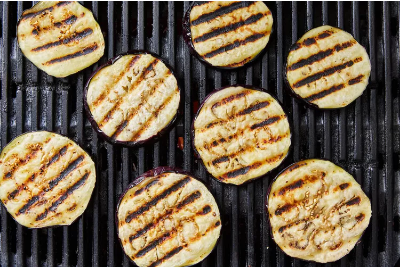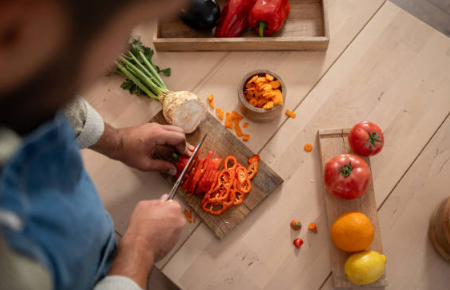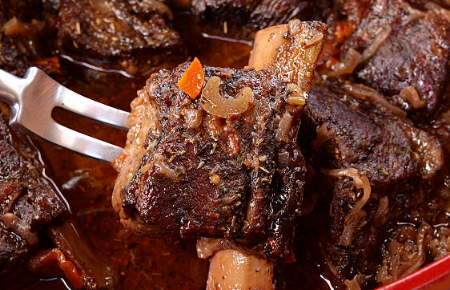4 Simple Ways to Cook Eggplant

How to Roast Beef in the Oven Without Drying It Out
June 15, 2025
How Long to Grill Steak for Perfect Results
June 15, 2025Eggplant is rich in dietary fiber and cancer-fighting antioxidants, making it one of the most versatile vegetables. It has a firm texture and a mild flavor, making it perfect for a variety of cooking methods, including breading and baking.
While eggplant is available year-round at the supermarket, its peak season runs from July to October. So, at the end of summer, make sure to keep these eggplant cooking tips handy. We’ve put together a complete guide on how to cook eggplant.

How to Pick the Best Eggplant
When you think of eggplant, you might picture the large, pear-shaped or cylindrical varieties with glossy purple skin. While this is the most common type of eggplant in the U.S., their shape and size can vary greatly, ranging from just a few inches to a foot long. Eggplants can also come in different colors, including white, green, red-orange, and striped. Want to grow your own? Our gardening experts can show you how!
Look for eggplants that are firm, smooth-skinned, medium-sized, and have a shiny, clean top. Smaller eggplants are typically less bitter than larger or older ones. Because eggplants spoil quickly, it’s best to store them in the fridge and use them within 2 to 4 days.
How to Peel and Prepare Eggplant for Cooking
As with all fruits and vegetables you cut open (like avocados or melons) or eat the skin of (like apples or eggplants), proper cleaning is key for food safety.
While the skin of small eggplants is edible, larger or older ones tend to have a bitter taste, so it’s best to peel them. If you’re wondering, “Should I peel eggplant before cooking?” the answer is yes, you should. Use a vegetable peeler or a sharp knife to remove the skin. Eggplants can discolor quickly once peeled, so it’s best to do this right before using them.
How to Prepare Eggplant
To cook eggplant, cut off the top and stem, then slice it into 1/2-inch thick rounds or 2/3-inch thick cubes, unless your recipe calls for something different. One pound of eggplant is about 5 cups of cubed pieces.
Some chefs recommend salting eggplant before cooking to draw out its bitterness, especially with older eggplants. While this isn’t necessary, it can help. Salt helps to draw out excess moisture, making the eggplant less bitter. To do this, place the eggplant slices or cubes on multiple layers of paper towels, sprinkle with salt, and cover with more paper towels. Press the eggplant down with a plate to release moisture. Let it sit for about 20 minutes, then rinse and pat dry before using. (This is the method we use for fan-favorite Parmesan Baked Eggplant.)
How to Roast Eggplant
Roasted eggplant makes a great base for dips and spreads, or can be served as a hearty side dish. Here’s how to roast it:
-
Preheat your oven to 450°F (230°C). Line a 15 x 10 x 1-inch baking pan with foil, or lightly grease the pan.
-
If you prefer, peel the eggplant and cut it into 3/4-inch cubes. Place the cubes in a large bowl. For 6 cups of eggplant (about one medium eggplant), combine 3 minced garlic cloves, 1 tablespoon of olive oil, 1/2 teaspoon of salt, and 1/4 teaspoon of black pepper in a small bowl. Toss the eggplant in the olive oil mixture, then transfer it to the prepared baking sheet.
-
Roast the eggplant for about 20 minutes, or until tender, stirring occasionally for even cooking.

How to Stuff Eggplant
Stuffed eggplant recipes might look complicated, but they’re actually easy to make. In fact, we think this is one of the best ways to cook eggplant in the oven. Plus, you can stuff it with all kinds of fillings! Our editors recommend Mediterranean mushroom stuffing, Caprese salad stuffing, or even a meaty Bolognese filling.
To stuff eggplant, first cut the eggplant in half lengthwise. Scoop out most of the flesh, leaving about 1/4 to 1/2 inch (0.6 to 1.5 cm) of shell. Chop up the scooped-out flesh and mix it with your stuffing ingredients. Add your preferred filling, then cook using one of the following methods:
-
Baked Stuffed Eggplant: Place the stuffed halves in a baking dish and bake at 350°F (175°C) for 25 to 35 minutes, or until the eggplant is heated through and the shell becomes tender.
-
Grilled Stuffed Eggplant: Wrap the eggplant halves in foil, seal, and grill for 20 to 25 minutes, or until the eggplant is tender.
How to Grill Eggplant
Eggplant is a natural for grilling because of its dense, spongy texture, which soaks up marinades, oils, and smoky flavors. It’s also easy to prep—no pre-cooking required. Here’s how to grill eggplant:
-
Trim the top and bottom of the eggplant, and peel if desired. Then, slice the eggplant into 1/2-inch to 1-inch thick rounds. You can also cut smaller eggplants in half lengthwise. Brush the slices on all sides with olive oil, melted butter, or cooking oil (or use an oily marinade). This will enhance the flavor and prevent sticking. Season with herbs, salt, and black pepper to taste.
-
Place the eggplant slices on a piece of heavy-duty foil or directly on the grill.
-
Charcoal Grill: Place the eggplant on the grill, over medium coals. Don’t cover it. Grill for about 8 minutes, flipping occasionally until the eggplant is crispy on the outside and tender inside.
-
Gas Grill: Preheat the grill and set the heat to medium. Place the eggplant slices directly on the grill. Close the lid and grill for about 8 minutes, flipping occasionally until crispy and tender.
-
How to Pan-Fry Eggplant
Pan-frying is one of the fastest ways to cook eggplant.
-
Brush the eggplant slices with olive oil, then season with salt and black pepper. In a shallow dish, place about 1/3 cup of seasoned breadcrumbs. If desired, mix in 1 to 2 tablespoons of grated Pecorino or Parmesan cheese.
-
In a large, heavy skillet, heat 2 tablespoons of olive oil over medium-high heat.
-
Add the breadcrumb-coated eggplant slices to the hot pan and fry for about 5 minutes on each side, or until golden brown.



